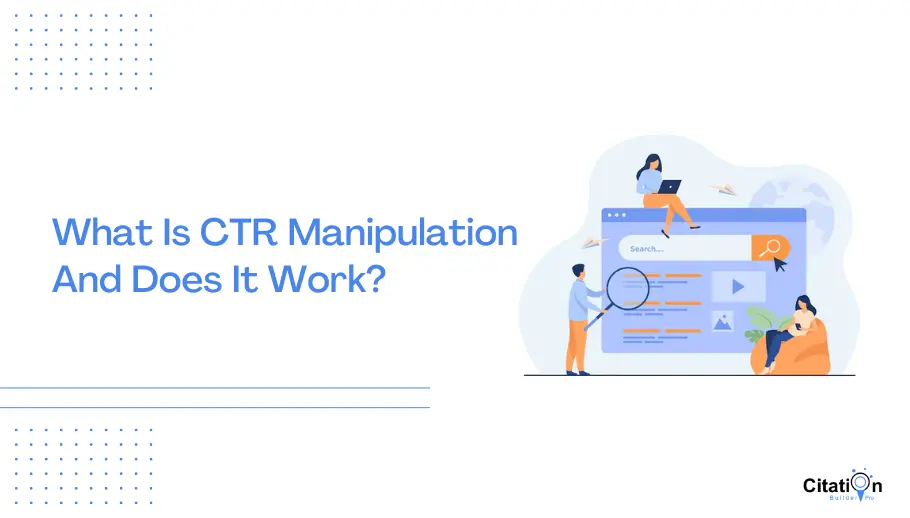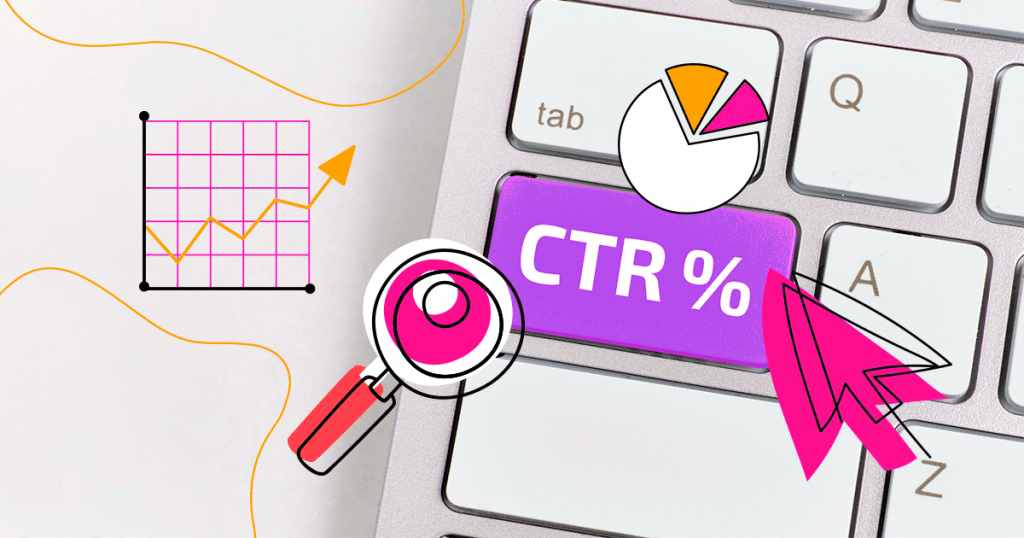Optimize Your Google My Business Listing with GMB CTR Manipulation
Optimize Your Google My Business Listing with GMB CTR Manipulation
Blog Article
Maximizing Organic Click-Through Rates With CTR Control
The optimization of organic click-through rates (CTR) is a nuanced venture that depends upon understanding both individual psychology and reliable content presentation. By leveraging critical control methods, such as incredibly crafted headlines and visually appealing components, online marketers can dramatically enhance individual involvement. However, the landscape is swarming with false impressions and oversimplifications about what really drives CTR. As we check out the details of these strategies, it becomes vital to determine the underlying principles that can cause continual success in capturing audience interest. What genuinely distinguishes the reliable from the inadequate in this essential facet of electronic marketing?
Recognizing Click-Through Fees
Comprehending click-through rates (CTR) is important for evaluating the performance of internet marketing methods. CTR determines the portion of users that click on a certain link or ad contrasted to the complete variety of customers that view it. A greater CTR shows that the material is engaging and pertinent to the target market, while a lower CTR might indicate a need for optimization.
To compute CTR, split the number of clicks by the variety of perceptions and increase by 100. For example, if an ad obtains 300 clicks out of 10,000 perceptions, the CTR would be 3%. This statistics is vital for evaluating numerous aspects of digital advertising and marketing, including search engine optimization (SEARCH ENGINE OPTIMIZATION), email projects, and social networks marketing.
Additionally, evaluating CTR aids marketing professionals identify which approaches yield the ideal results and which need refinement. By concentrating on boosting CTR, businesses can improve their web content's exposure and efficiency, leading to boosted traffic and possible conversions. Understanding the nuances of CTR is fundamental for any kind of marketing professional intending to enhance their on-line presence and optimize return on investment (ROI)

The Psychology of Customer Actions
Individual habits is substantially influenced by mental aspects that determine just how people communicate with on-line web content. Comprehending these elements is vital for optimizing click-through prices (CTR) in natural search results. Cognitive biases, such as the anchoring effect, play a crucial duty in forming users' perceptions. When customers run into info, their initial impacts can greatly influence their subsequent judgments concerning significance and trustworthiness.
Psychological reactions additionally considerably influence user habits. Web content that resonates mentally can cause a sense of seriousness or inquisitiveness, triggering individuals to click. In addition, social proof-- such as individual testimonials or ratings-- can improve trust fund and encourage engagement, as people usually want to the habits of others to educate their very own decisions.
Furthermore, the concept of deficiency can drive clicks - CTR Manipulation Press Release. Limited-time deals or unique content produce a concern of missing out on out (FOMO), engaging users to act rapidly. Comprehending these emotional drivers allows marketing experts to create more compelling content that resonates with their target audience
Efficient CTR Adjustment Strategies
Leveraging emotional understandings can substantially boost click-through prices (CTR) via targeted manipulation techniques. One of the most efficient techniques is using compelling headlines that evoke interest or seriousness. Phrasing titles as questions or incorporating numbers can attract more attention, prompting customers to click.
An additional strategy entails maximizing meta descriptions to create a sense of importance and immediacy. By plainly laying out the benefits or solutions given in the web content, you can involve possible visitors and persuade them to click. Additionally, utilizing power words-- such as "unique," "confirmed," or "cost-free"-- click here for more can improve the appeal of your content.
Aesthetic components likewise play an essential role. Including captivating pictures or thumbnails can draw individuals in and boost CTR. A/B testing various visuals can aid determine which photos resonate best with your audience.
Last but not least, ensuring that your content promises deliverable worth results in greater CTR. When individuals perceive that clicking will provide click to find out more them with purposeful insights or remedies, they are more probable to engage. By using these methods attentively, marketing professionals can efficiently adjust CTR to their advantage while keeping ethical requirements.
Usual Myths Regarding CTR
Numerous mistaken beliefs border click-through rates (CTR) that can lead online marketers to make illinformed decisions. One prevalent myth is that a greater CTR constantly translates to much better efficiency. While a high CTR recommends that even more users are clicking, it does not ensure sales or conversions. Inevitably, the effectiveness of web traffic depends upon the top quality of the touchdown web page and the relevance of the content.
An additional usual idea is that CTR is a separated metric. Actually, CTR must be examined combined with other performance indicators, such as bounce price and conversion price, to obtain an all natural sight of project success.
Furthermore, some marketing professionals assume that optimizing for CTR alone is sufficient. Concentrating solely on CTR can lead to clickbait strategies that may draw in clicks but fall short to involve users meaningfully. GMB CTR Manipulation. This approach can damage brand reputation and cause lower retention prices
Finally, there is a notion that CTR methods are universally reliable. The reality is that optimum CTR strategies can differ significantly throughout markets and target audiences, necessitating tailored methods for various market sections. Recognizing these myths is crucial for establishing effective CTR methods that align with overarching advertising goals.
Determining CTR Success
Although high click-through prices (CTR) can indicate successful involvement with content, determining their real success requires a detailed evaluation of several aspects. It is vital to recognize the context in which the CTR is achieved. For instance, a high CTR blog on a deceptive title might not convert to meaningful interaction or conversions, eventually mirroring poorly on the brand's trustworthiness.
Second, examining the resource of website traffic is crucial. Organic traffic from online search engine can symbolize a durable web content approach, while clicks from irrelevant sources may indicate a lack of targeting. Furthermore, determining the succeeding customer behavior is vital; analyzing metrics such as bounce rate, time spent on page, and conversion rates can supply much deeper understandings right into the high quality of the involvement initiated by the CTR.

Conclusion

The optimization of natural click-through rates (CTR) is a nuanced undertaking that hinges on recognizing both individual psychology and reliable material discussion. CTR determines the percent of individuals that click on a particular web link or ad contrasted to the overall number of individuals that see it. A greater CTR indicates that the material is engaging and appropriate to the target audience, while a reduced CTR may indicate a need for optimization.
Focusing specifically on CTR can lead to clickbait strategies that might attract clicks however fall short to engage individuals meaningfully. In addition, measuring the succeeding customer behavior is crucial; analyzing metrics such as bounce rate, time invested on web page, and conversion rates can offer much deeper understandings into the high quality of the involvement initiated by the CTR.
Report this page